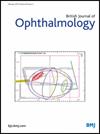基于无代码平台的多病眼底图像生成
IF 3.5
2区 医学
Q1 OPHTHALMOLOGY
引用次数: 0
摘要
目的绕开编码技术的要求,生成多种视网膜疾病的眼底照片。方法收集10类视网膜病变眼底照片,每类眼底照片500张。我们将收集到的数据随机分为训练集(80%)和测试集(20%)。使用谷歌laboratory实现Pix2Pix为每个类别生成眼底照片。我们比较了眼科医生对真实图像和合成图像的诊断能力。比较了在真实数据集、综合数据集和组合数据集上训练的分类模型的诊断性能。此外,由眼科医生和人工智能(AI)图像检测网站区分真实图像和合成图像。结果采用该方法成功合成了10类眼底照片。三位眼科医生合成图像的诊断准确率略高于真实图像(99.7%对98.7%,98.0%对96.0%,99.7%对94.3%);p = 0.109)。真实图像和合成图像相结合训练ResNet-50和VGG-19模型,准确率显著提高,分别达到93.7%和89.3%。5名居民在区分真实图像和合成图像方面达到了至少92.5%的准确率。相比之下,三个人工智能图像检测网站在这项任务中表现出有限的能力,最高准确率为51.2%。结论谷歌上的Pix2Pix能有效地生成具有典型特征的多种眼底图像。所有与研究相关的数据都包含在文章中或作为补充信息上传。本研究生成的眼底照片已上传至网站()分享,任何人都可以访问。网站地址在正文中显示。本文章由计算机程序翻译,如有差异,请以英文原文为准。
Generation of multidisease fundus photographs with code-free platform
Purpose To generate fundus photographs of multiple kinds of retinal disease, bypassing the requirement of coding technique. Methods The dataset contained fundus photographs of 10 categories of retinal conditions, with 500 fundus photographs in each category. We randomly divided the collected data into a training set (80%) and a test set (20%). Google Colaboratory was used to implement Pix2Pix to generate fundus photographs for each category. We compared the diagnostic abilities of ophthalmologists on both real and synthetic images. The diagnostic performance of the classification models trained on real, synthetic and combined data sets was also compared. Furthermore, the real and synthesised images were distinguished by ophthalmologists and artificial intelligence (AI) image detection websites. Results Fundus photographs of 10 categories were successfully synthesised using our method. The synthetic images showed slightly higher diagnostic accuracy by the three ophthalmologists than the real images (99.7% vs 98.7%, 98.0% vs 96.0% and 99.7% vs 94.3%; p=0.109). Training ResNet-50 and VGG-19 models with a combination of real and synthetic images resulted in significant improvements in accuracy, achieving 93.7% and 89.3%, respectively. Five residents achieved at least 92.5% accuracy in discriminating between real and synthetic images. In contrast, three AI image detection websites showed limited capability in this task, with a maximum accuracy of 51.2%. Conclusion Pix2Pix on Google Colaboratory can efficiently produce a diverse range of fundus images with typical characters. All data relevant to the study are included in the article or uploaded as supplementary information. The fundus photographs generated in this study have been uploaded to the website (
求助全文
通过发布文献求助,成功后即可免费获取论文全文。
去求助
来源期刊
CiteScore
10.30
自引率
2.40%
发文量
213
审稿时长
3-6 weeks
期刊介绍:
The British Journal of Ophthalmology (BJO) is an international peer-reviewed journal for ophthalmologists and visual science specialists. BJO publishes clinical investigations, clinical observations, and clinically relevant laboratory investigations related to ophthalmology. It also provides major reviews and also publishes manuscripts covering regional issues in a global context.

 求助内容:
求助内容: 应助结果提醒方式:
应助结果提醒方式:


